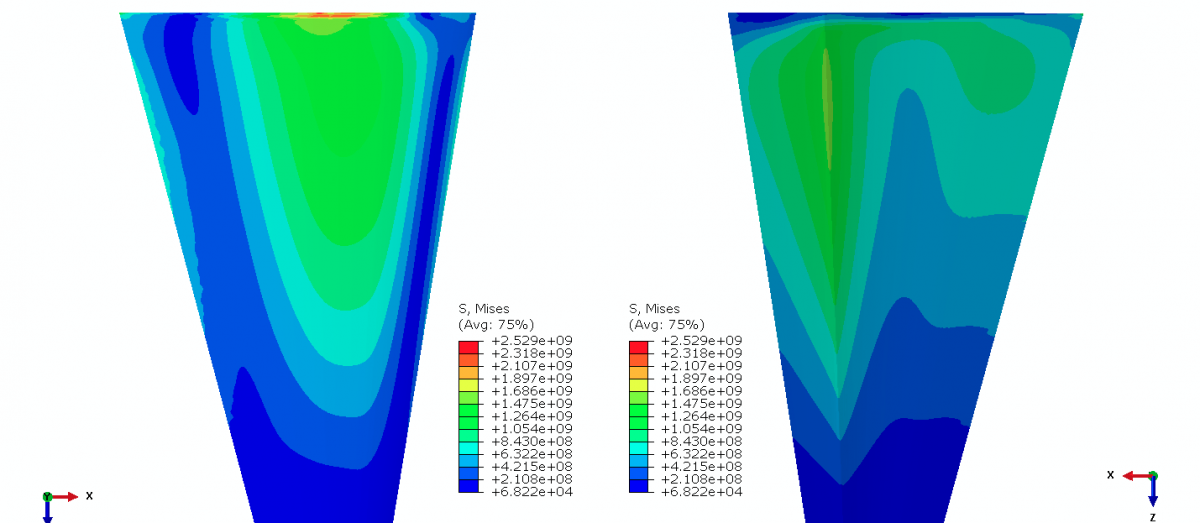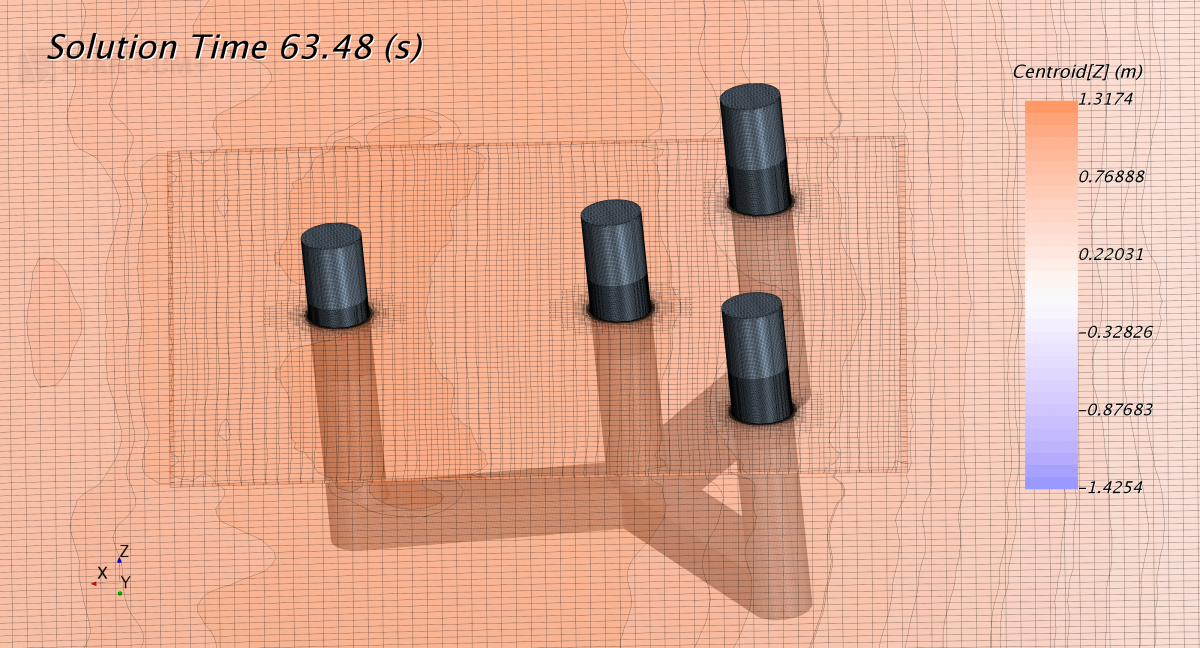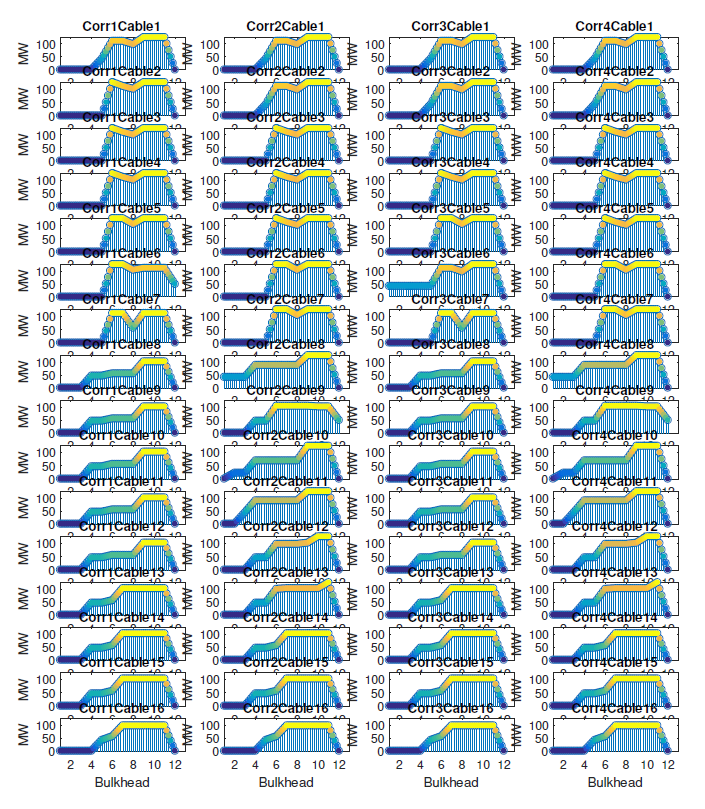Projects
Influence of Viscosity and Non-linearities in Predicting Motions of a Wind Energy Offshore Platform in Regular Waves
In this work, spetial attention has been put on understanding why heave cancellation periods are erroneously perdicted by potential theory computation. Non-linear phenomena such as vortex shedding was encountered. See publications section for more details.
Multidisciplinary Probabilistic Design. Multifidelity Gaussian Processes
During the development of this paper, I helped develop structural simulations aimed at studying supercavitating hydrofoils. These simulations were used to construct surrogate models with multi-fidelity Gaussian Processes, which enabled an efficient optimization of the geometry of the hydrofoils. The images below show the examples of the low and high fidelity structural models. For more details, check the publication A probabilistic framework for multi‐disciplinary design: Application to the hydro‐structural optimization of super‐cavitating hydrofoils.


Bachelor Thesis
The purpose of the Thesis is to explore potential applications of RANS CFD in seakeeping problems. The phenomena analyzed is deck submergences and its effects on some sensors. These sensors are carried on the foredeck of the ship considered. They are placed in a housing with a coaming used to protect them.
Master Thesis
In the seakeeping study of my Master Thesis, I corrected Potential methods by performing URANS simulations in Starccm+. The viscous correction was implemented by adding empirical damping. Other corrective models could have been implemented, such as a Morison Model. This work was presented at OMAE 2018, more info in the publications section.
 |
| Brazeless semisubmersible platform studied in my Master Thesis. |
ESRDC
Parametric CAD modeling and network optimization. Binning Problem-NP partition- Creation of groups of discrete entities. A simple algorithm is used at this preliminary state. More specifically, first fit decreasing, which operates by first sorting the items to be inserted in decreasing order by their sizes. Afterward, an iterative algorithm is applied to rearrange power between the line. The algorithm is still in development. Special thanks to Chryssostomos Chryssostomidis, Julie Chalfant and Chatham Cooke, for their help and guidance.
 |
| The parametric model was developed using Grasshopper. The model created sections of the Power Corridor that were later allocated at each ship section. |
 |
| Maximum expected power flow per cable in a 4 corridor configuration. Preliminary results obtained in the two-step process. |
Reef Explorer (REX)
Large Deformations Analysis: co-simulations with Starccm+ and Abaqus. Influence of large deformations on a vessel’s response in head seas. Published article in Ocean Engineering: Influence of large hull deformations on the motion response of a fast catamaran craft with varying stiffness. Example of preliminary simulation below, not included in the publication.